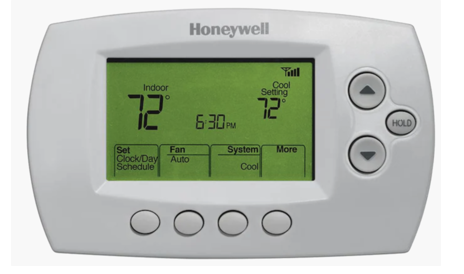Can’t you just hear that old reminder from Mom or Dad? “Turn out the lights! We don’t work for the electric company.” Did you read that in your mother’s voice? Turns out Mom was right. Power bills aren’t cheap, and as the cost keeps rising, they don’t look poised to get lower any time soon.
It’s not just the lights that cost you. There’s the AC in summer, the furnace in winter, and the hot water heater. Throw in your appliances and electronics, and the utility bill adds up. The US Department of Energy estimates that power bills for most homes can top $1,8000 yearly. That’s not exactly chump change!
Here are some tips and tricks for lowering your bill by up to 25%. None of them are hard to do.
Water water everywhere
Let’s start with water-related bills. Even if you’re on a well and don’t pay for water, keep in mind that you’re burning electricity whenever your well pump is running.
Replace your old appliances with energy-efficient models. Older dishwashers used about 10 gallons of water per cycle. The newer, Energy Star models use only 3.5 gallons of water, and they get the job done even better. As your appliances exceed their expected lifespan, replace them by order of priority with more efficient models. Hint: If your old water heater is way past its prime, think about replacing that one first. Don’t wait until it’s leaking. Speaking of water heaters, a tankless, on-demand model will save even more energy.
Fix leaky faucets. It’s bad enough that the constant drip, drip, drip is driving you bonkers. The hard truth is that it’s wasting many gallons of water. If you’re handy, this can be an easy fix. There are plenty of videos on YouTube about fixing a leaky faucet. Click here for an example. Just remember to shut of the water first at the cut-off under the sink.
Adjust your water heater thermostat. Typically, the default setting on your water heater is 140 degrees. Dropping that down to 130 degrees can save up to 5% on your water heating bill.
Take shorter showers. Trim just two minutes off your shower time and save about five gallons of water.
Get a new showerhead. Find one with a WaterSense label, which meets efficiency standards of the EPA, and you can save up to 2,700 gallons in a year.
Wash your clothes in cold water. You’ll cut your per-load energy usage in half. Use warm if you must, but don’t wash clothes in hot water.
Feeling hot hot hot and keeping your cool
Where bloated utility bills are concerned, home heating and cooling are the worst offenders. Fortunately, they are a great place to utilize cost-cutting measures.
When seals go bad. We’re don’t mean the slinky circus critters, but the seals around your home. Check the seals on your refrigerator and freezer doors for mold and cracks. You want to keep the cold air inside, where it belongs. It’s an easy fix. Click here for a how-to video.
Also check the seals around doors and windows. If cool leaks out in summer and warm leaks out in winter, chances are good your wallet is leaking, too.
Fix leaky ductwork. When your HVAC ducts are leaking into the attic, you might as well just be burning money. Seal up those ducts for noticeable savings. Ask your HVAC company to check for and repair any leaks.
Tweak that thermostat. Bump your thermostat back a few degrees while you sleep in wintertime. If you’re going away, set it back at least ten to 15 degrees. In the summer, if you can stand it, make it a few degrees warmer. There’s a definite cost savings if your summer thermostat is set at 75, rather than 72.
Speaking of thermostats, also adjust the temperature in your freezer and fridge. The freezer should be between 0 and 5 degrees. Set the refrigerator at 38 to keep your food fresh without overworking to maintain a colder temperature.
Power to change
Lights and electronics take about 11% of your home’s energy annually. Here are some tips to lower your bills.
Install dimmer switches. Not only can you set the brightness in the room to suit your preferences, but you’ll also save energy. Installing a dimmer is amazingly easy to do. Click here for a video that shows you how.
Changing your bulbs is a bright idea. If you swap out the incandescent bulbs in your home’s five most-used light fixtures for LEDs or compact flourescents, you can save about $75 per year. Better yet, swap out all the bulbs in your home and save even more. NOTE: If you’re using dimmers, be sure you buy bulbs that are dimmable.
Smart power strips are pretty smart. A lot of your electronic gear never really turns off. Some of these have remote controls or clocks, and they remain on standby power. That’s not a lot of power, but add up the number of devices and factor in 24/7 for a year, and you’re using noticeable power. Smart power strips will cut off the current automatically when the devices are sitting idle.
The key to home energy savings is to be proactive. Also, admit that Mom was right! Take the steps outlined here, and you’ll see a noticeable reduction in your bills each month.



